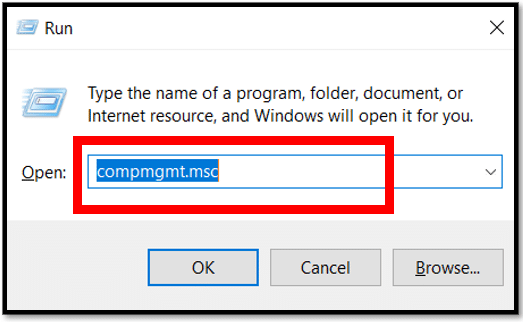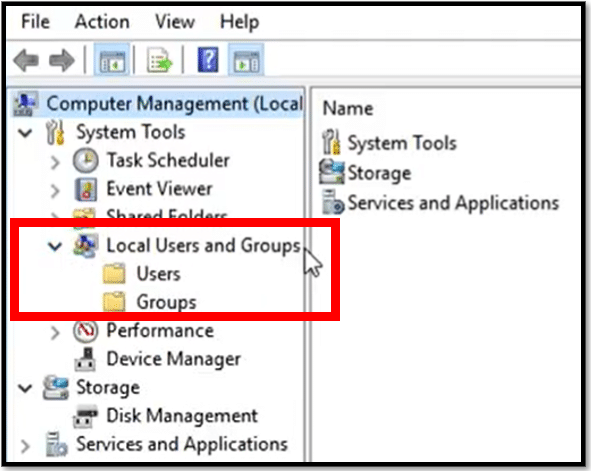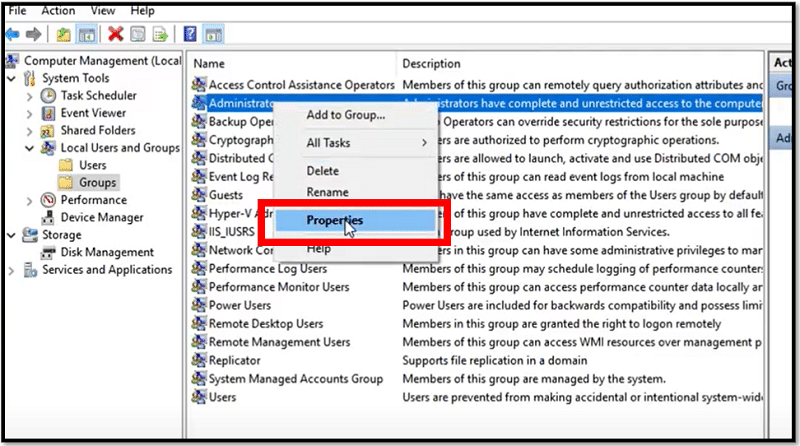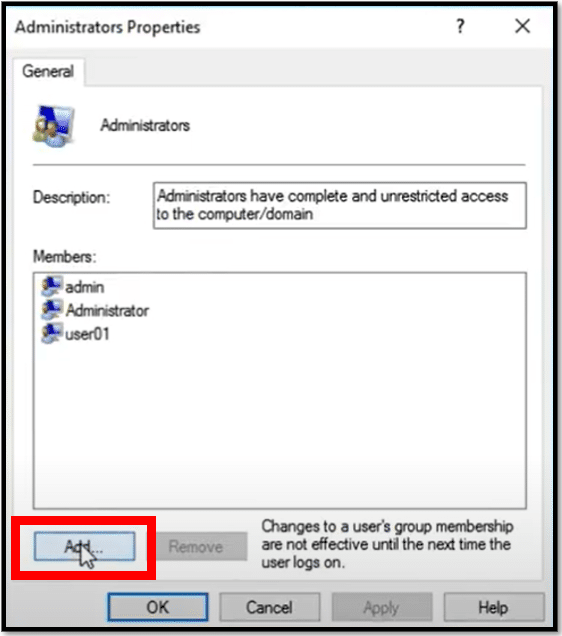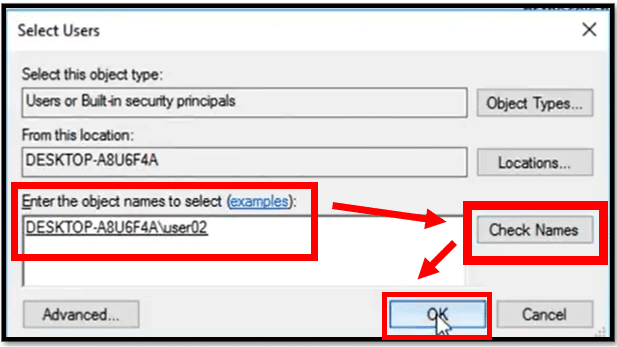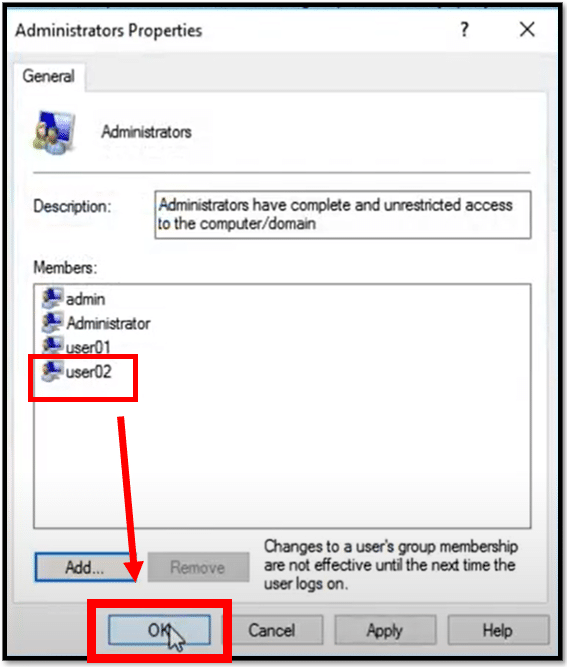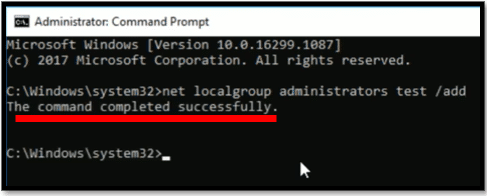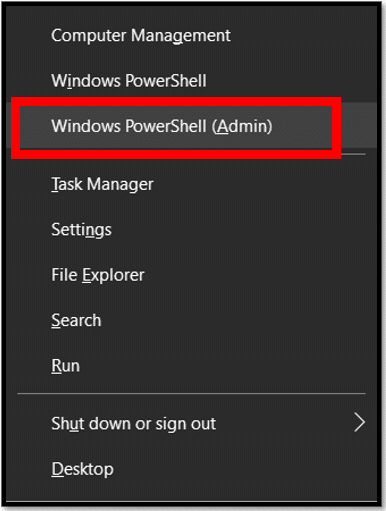A limited user, unlike a user with administrator rights, does not have access to system controls. It is only with administrator privileges that a user can modify settings, install applications, administer elevated tasks, and achieve pretty much anything on the computer.
Scroll down to find how to add a user to the local administrator group in Windows 10 granting them access to system functions. In this guide, you will discover how to add a user to the local administrator group using Computer Management, Command-line, and Powershell.
Method 1. Add User to Local Administrator Group in Windows 10 Using Computer Management
Computer Management is a Microsoft Management Console snap-in that allows you to host administrative tools to manage system components, computer services, and networks. Not only on your computer but also on other Windows machines (that you have access to) on the local network.
Computer Management also allows you to add a user (on the network domain) to the admin user group to share the administrator rights; however, make sure to access Computer Management with the administrator privileges.
Note: Local Users and Groups is accessible only on Windows 10 Professional, Education, or Enterprise editions. If you are handling Windows 10 Home Edition, skip to Method 2, i.e., add a user to the local administrator group using cmd.
Follow these simple instructions to Add User to Local Administrator Group in Windows 10:
Step 1: Press Win + R (Windows logo key plus R) at once to open the Run box.
In the run box, type compmgmt.msc and click OK.
Alternatively, you can type Computer Management in the Search menu to open the application.
Read More: How to Open Computer Management in Windows 10
Step 2: In the left pane under the Control Management tab, expand Local Users and Groups.
Then, select Groups.
Step 3: In the right pane, highlight the Administrators option and right-click on it.
From the drop-down menu, select Properties.
Step 4: On the new window tab, click on Add (bottom-left option).
Step 5: In the new dialog box, under Enter the object name to select option,
- Type the username that you want to add to the local administrator group.
- After entering, click on Check Names (right of the box) to validate the name.
- And click on OK to save the changes.
You will see that the desired user name has been added.
Again, click on OK.
You can review the changes made by opening the Users tab in the left pane:
- Right-click on the user name (that you added).
- From the drop-down menu, select the Properties option.
- On the new tab, select the second option—Member Of.
- You will see that the user is now a member of the administrator group.
As it is evident, learning how to add a user to the local administrator group in Windows 10 is a straightforward process and doesn’t require any complicated steps.
Note: In the above outline, you have seen how to add a user to the local administrator group; to add a computer to the local administrator group instead:
From step 5:
- Click on the first option —Object Types in the new dialog box.
- Opt for Computers and click on OK.
- Within the Enter the object names to select the box, type the name of the desired computer.
- Click on Check Names (to authenticate the computer name).
- And choose OK to save the settings.
Method 2. Add User to Local Administrator Group in Windows 10 from Command Line (CMD)
As stated earlier, if your Windows 10 edition doesn’t have the Local Users and Groups label, you can use Command Line to Add Users to Local Administrator Group in Windows 10. This technique works on all versions, regardless of the Windows edition.
Follow these easy steps to add a user to the local administrator group using the command line:
Step 1: Open an elevated Command Prompt.
Hover to the Search menu and type Command Prompt (or cmd). Choose Run as administrator.
Step 2: You can view all the added local groups by typing:
net localgroup
Press Enter once you type the command.
Step 3: To add a user to the local administrator group using cmd, type the below-mentioned command:
net localgroup Administrators {username} /add
Press Enter.
You will see a message saying: The command completed successfully.
Note: In the above command, you do not have to type the brackets “{}.” Just enter the username; for instance, to add the username — test— enter only the desired username like:
net localgroup Administrators test/add
Here “test” is the desired user name.
Executing the net localgroup command, you will successfully Add a User to the Local Administrator Group using cmd, i.e., command line.
Method 3. Add User to Local Administrator Group in Windows 10 Using Powershell
Microsoft Powershell, like Command Prompt, is a command-line shell but with added features that can execute scripting/cmdlet instructions—making it more compelling than the command prompt (the above method of adding a user to the local administrator group).
Follow these simple instructions to add a user to the Local Administrator Group using Powershell (in Windows 10):
Step 1: Press Win+X (Windows logo plus X keys) together, from the list of options:
Select Windows Powershell (Admin).
Read More: How to Open PowerShell in Windows 10
Step 2: To view the existing local users, type this command:
Get-LocalUser
Step 3: To Add user to Local Admin Group, type this command:
add-LocalGroupMember -Group "Administrators" -Member "Username"
Replace “Username” with the desired user-name to successfully add a user to the local administrator group using Powershell.
You will see a message saying: The command completed successfully.
To add multiple users to the local administrator group at once, type this command instead:
Add-LocalGroupMember -Group "Administrators" -Member "User1", "User2", etc...
You can review the modifications by opening the netplwiz through the Run box:
- Press Win+R keys at once; this will open the Run box.
- Enter netplwiz in the Run box.
- Click OK.
- Under Users, you will see the added user in the User Name section. From the Group, you can examine if the user has administrator privileges or not.
Note: Due to variable system configurations, the above script might not work on some computers. If that is the case, try using this script instead to add a local user to the local administrator group using Powershell:
Copy the script (given below) to a text editor on your computer.
$Username = "USERNAME"
$group = "Administrators"
$adsi = [ADSI]"WinNT://$env:COMPUTERNAME"
$existing = $adsi.Children | where {$_.SchemaClassName -eq 'user' -and $_.Name -eq $Username }
if ($existing -eq $null) {
Write-Host "Adding local user $Username to $group."
& NET LOCALGROUP $group $Username /add
}
else {
Write-Host "Adding to administrators group $Username."
$existing.SetPassword($Password)
}
Write-Host "Ensuring password for $Username never expires."
& WMIC USERACCOUNT WHERE "Name='$Username'" SET PasswordExpires=FALSE
Replace the USERNAME with the desired user name.
- Copy the edited script.
- Open Windows Powershell with Admin rights (Win+X).
- Right-click to paste the code.
- Powershell will add the user to the local administrator group automatically, no need to press Enter.
Conclusion
You can work on any of the three methods discussed to successfully add users to the local administrator group on Windows 10. However, the first method, i.e., add a user to the local administrator group using Computer Management, is not accessible on Home editions of Windows 10; still, you can employ cmd or Powershell.
